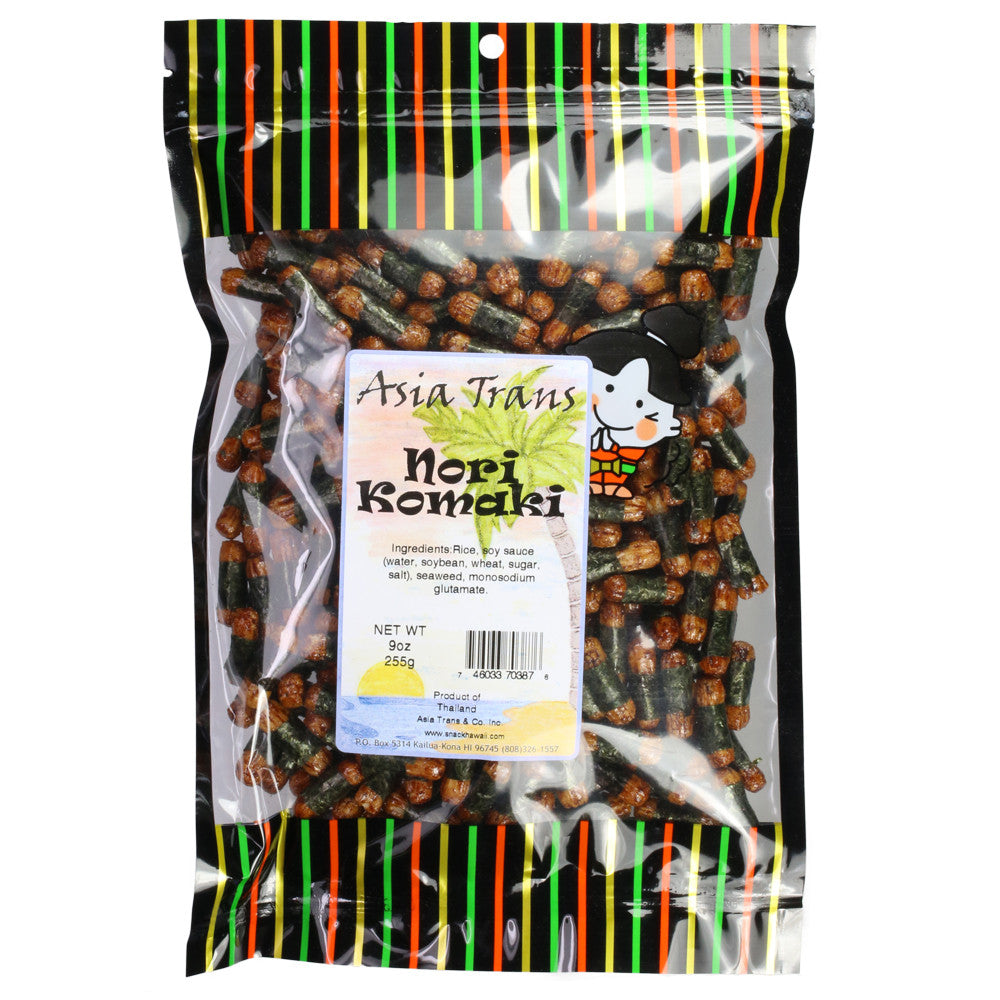What is the Meaning of Arare?
Arare, also known as "mochi crunch" or "kakimochi," refers to small, bite-sized Japanese rice crackers made from glutinous rice. The word "arare" in Japanese means "hailstones," named for their small, round, or irregular shapes that resemble tiny pellets. Arare is often flavored with soy sauce, seaweed, or spices and is enjoyed as a crunchy, savory snack on its own or mixed with other ingredients.
What Are Asian Rice Crackers Made Of?
Asian rice crackers are primarily made from rice flour, typically using either white or brown rice flour. Japanese varieties like senbei are made with non-glutinous rice, while glutinous rice is used for types like arare and okaki. After baking, roasting, or frying, rice crackers are seasoned with soy sauce, salt, sesame, or other condiments, imparting a unique, savory flavor. This combination of rice and seasoning creates a light, crispy snack enjoyed across Asia.
Are Asian Rice Crackers Healthy?
Asian rice crackers can be a healthy snack option, especially when they are baked and made with minimal ingredients. They are often lower in calories than many processed snacks, and varieties containing sesame seeds or seaweed can provide added nutrients, such as healthy fats, fiber, and minerals. Pairing rice crackers with nutrient-dense foods like vegetables or lean proteins can help create a balanced snack.
However, not all rice crackers are equally healthy. Some brands add sugar, salt, or oils, increasing calories, sodium, and saturated fat. When shopping for rice crackers, check ingredient labels to find options with simple, whole ingredients and minimal additives.
Do Rice Crackers Have MSG?
Some Asian rice crackers contain MSG (monosodium glutamate), a common additive used to enhance their salty and umami flavors. While MSG is generally safe for most people, as classified by the FDA, some individuals may choose to avoid it due to sensitivity concerns. Many rice cracker brands now offer "MSG-free" options for those looking to enjoy their snack without additives.
Are Rice Crackers Better Than Potato Chips?
Rice crackers can be a healthier alternative to potato chips, especially if they are baked rather than fried, as they tend to be lower in fat. Choosing rice crackers made from whole-grain rice can add a bit more fiber, although they are generally not as fiber-rich as other whole-grain snacks. To make a nutritious choice, look for rice crackers with minimal ingredients and avoid those high in salt, sugar, or artificial additives.
Can I Eat Rice Crackers on a Diet?
Yes, you can enjoy rice crackers on a diet, but it’s best to eat them in moderation. To make your snack more balanced and satisfying, consider pairing rice crackers with protein-rich foods like hummus or cottage cheese. As a rule of thumb, consult your dietitian to determine the best snacks to support your dietary goals.
Are Rice Crackers Good for Weight Loss?
Rice crackers can be included in a weight loss plan when eaten in moderation, as they are generally lower in calories than many fried or heavily processed snacks. However, rice crackers are often low in fiber and protein, which means they may not keep you feeling full for long. For a more balanced snack, try pairing rice crackers with foods high in protein or fiber, like hummus or vegetables, to enhance satiety. Choosing whole-grain or brown rice crackers can also provide slightly more nutrients and fiber than those made from white rice.
Do Rice Crackers Contain Gluten?
Traditional Japanese rice crackers made from rice flour are often gluten-free, especially if they use pure rice flour. However, many commercially produced rice crackers may contain added ingredients like soy sauce or wheat-based seasonings, which contain gluten. Always check the packaging or ingredient list to confirm if rice crackers are labeled gluten-free, especially if you have celiac disease or gluten sensitivity.
How Many Calories in a Rice Cracker?
The calorie content of rice crackers varies depending on the size, ingredients, and preparation method. On average, a single small rice cracker (about 3-5 grams) contains around 10–20 calories. Plain or lightly seasoned crackers are generally lower in calories, while flavored or fried varieties may have more. Always refer to the nutritional label for the most accurate information, especially if you’re counting calories.
How to Store Your Rice Crackers for Maximum Freshness
To keep rice crackers fresh and crunchy, store them in an airtight container in a cool, dry place, away from sunlight and humidity. Avoid storing them in the refrigerator, as the moisture can make them stale. For longer storage, rice crackers can be sealed in an airtight bag and kept in the freezer; just allow them to reach room temperature before eating to restore their crisp texture.



















